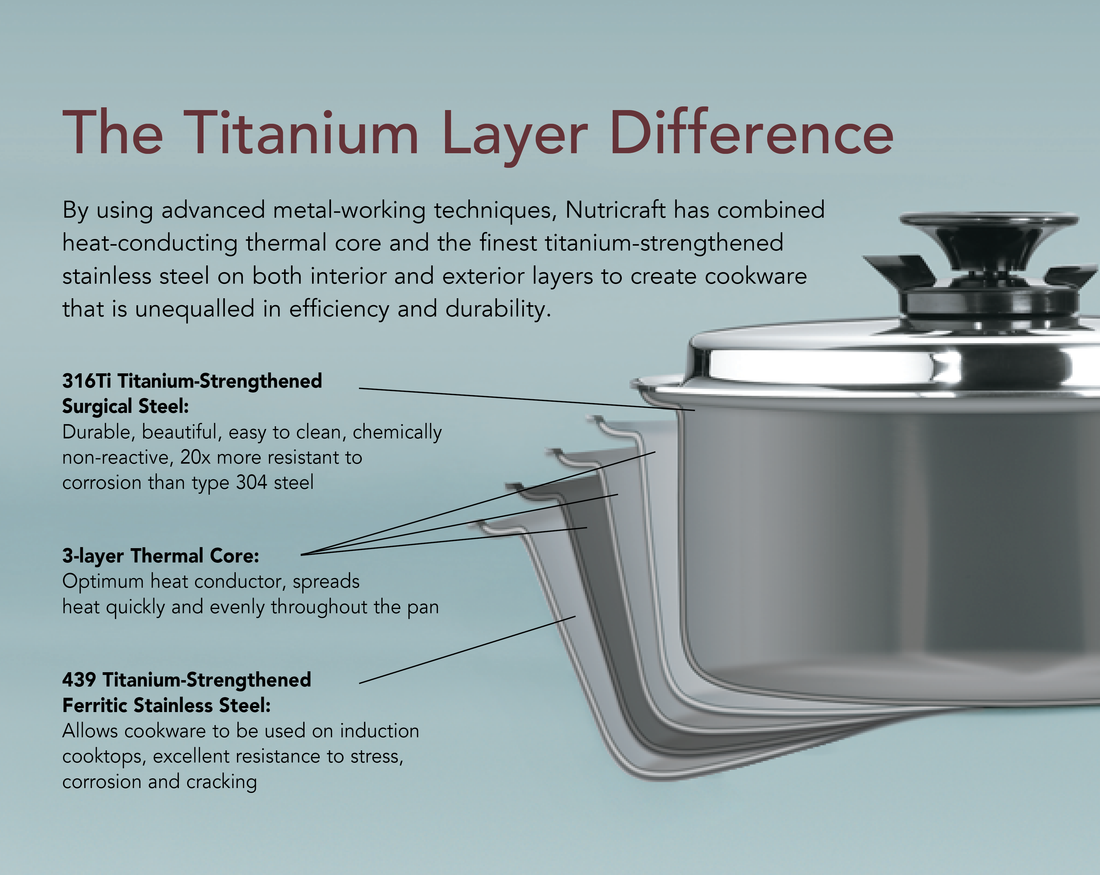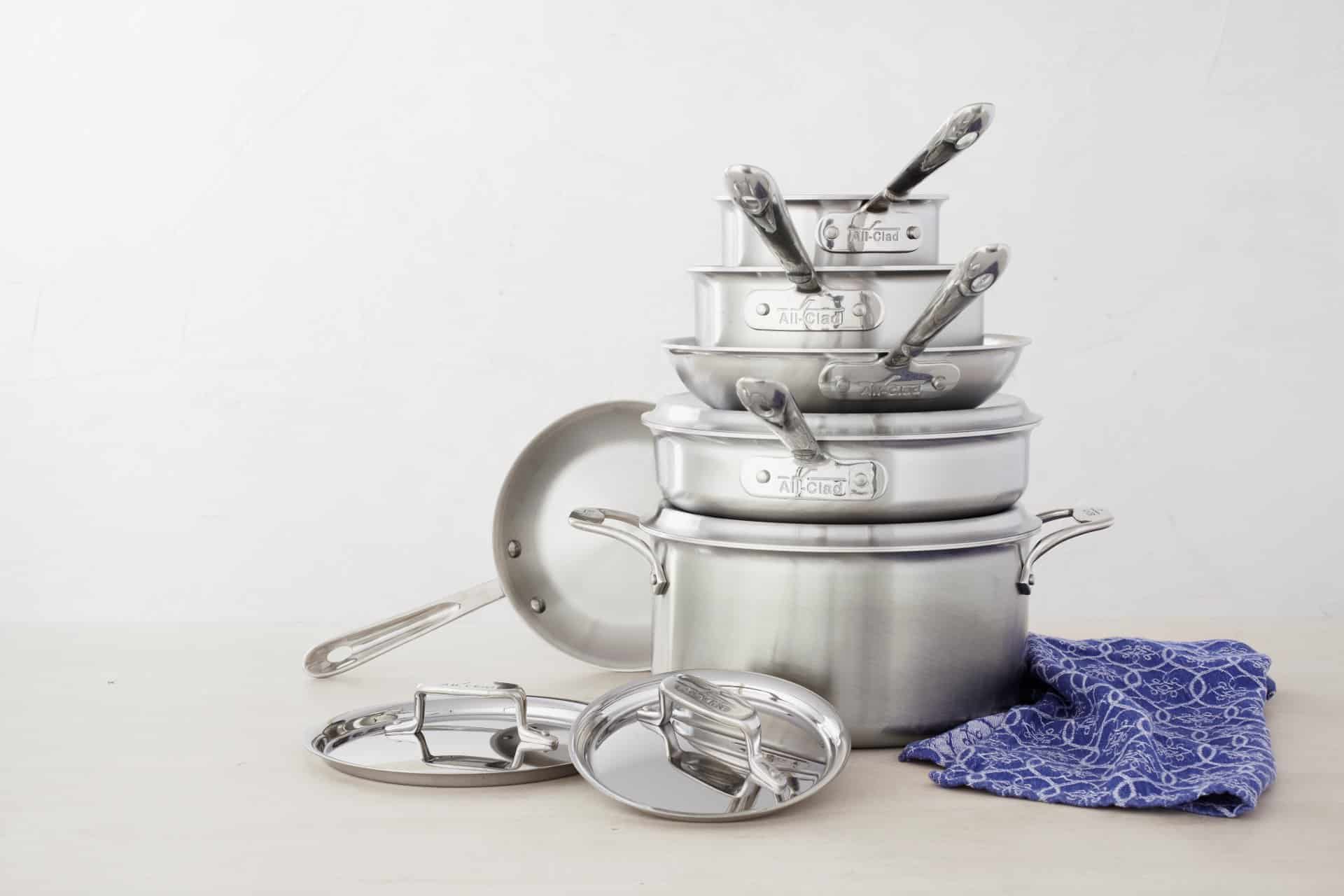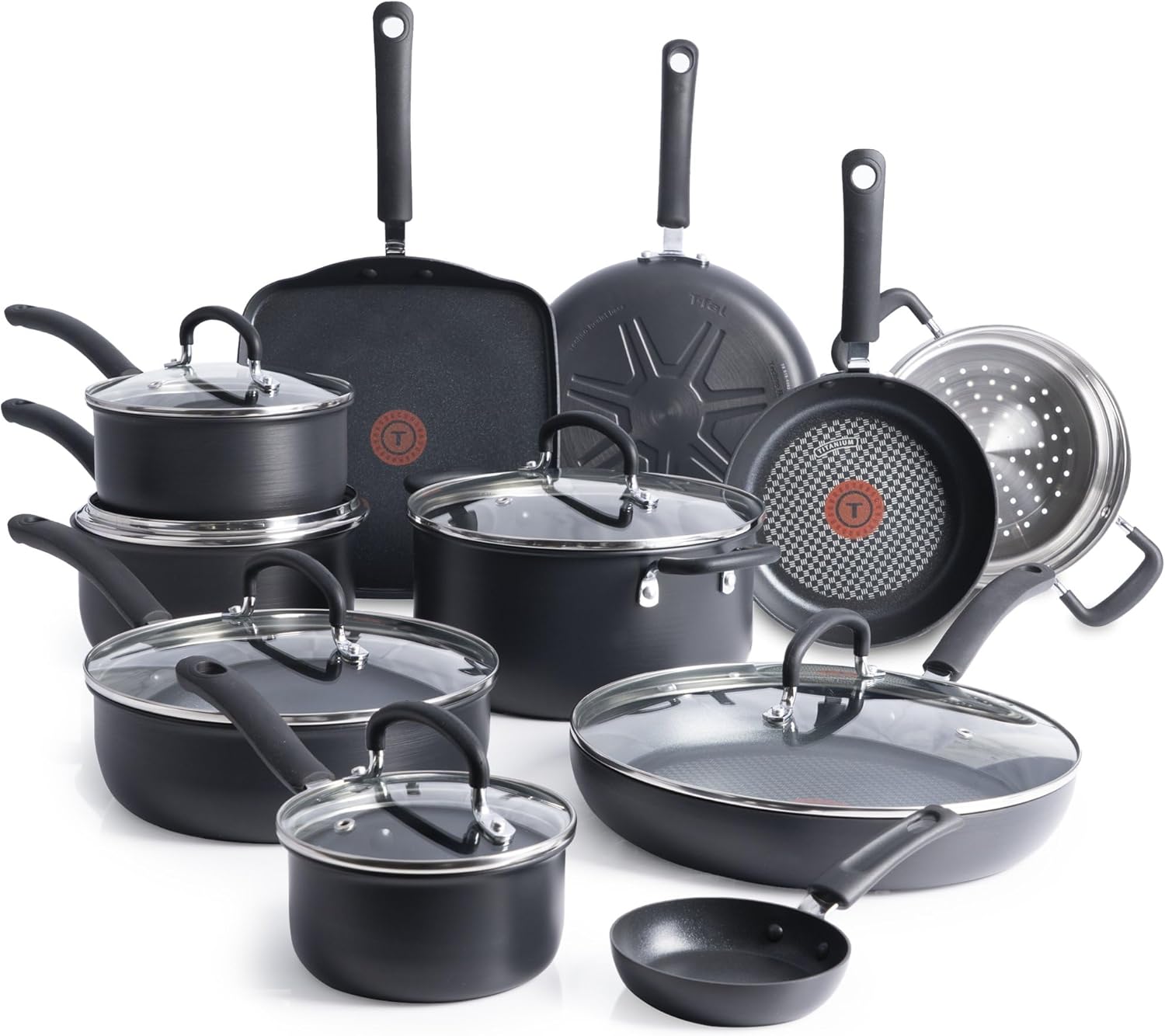Stainless steel cookware is a popular choice in many kitchens. It is known for its durability and sleek appearance.
But is it safe to use? When cooking, safety should always be a priority. Stainless steel cookware is generally safe and non-reactive. It doesn’t leach harmful chemicals into food, unlike some other materials. However, it is essential to understand how to use and care for it properly.
This includes knowing the right temperature to avoid warping and how to clean it without damaging the surface. Understanding these factors can help you enjoy the benefits of stainless steel cookware while keeping your food safe. Let’s explore more about stainless steel cookware safety and what you should consider for healthy cooking.
Introduction To Stainless Steel Cookware
Stainless steel cookware is popular for many reasons. It is durable, easy to clean, and safe for cooking. Many people choose it for their kitchens. It provides a sleek look and a reliable cooking surface. This cookware does not react with food, ensuring flavors stay pure. Let’s explore why stainless steel cookware is a great choice.
Popularity In Modern Kitchens
Stainless steel cookware has gained popularity in modern kitchens. Here are some reasons for its widespread use:
- Durability: Stainless steel is strong and long-lasting.
- Non-reactive: It does not react with acidic foods.
- Versatile: Suitable for various cooking methods.
- Easy to Clean: It can be washed easily, often in a dishwasher.
- Elegant Appearance: Adds a stylish touch to any kitchen.
Composition And Types
Stainless steel cookware consists of a mix of metals. The main elements are:
| Metal | Purpose |
|---|---|
| Iron | Provides strength and durability. |
| Chromium | Prevents rust and corrosion. |
| Nickel | Adds shine and enhances resistance. |
There are different types of stainless steel cookware:
- Clad Cookware: Layers of metals for even heating.
- Nonstick Stainless Steel: Coated for easy food release.
- Tri-Ply Cookware: Three layers for strength and heat distribution.
Choosing the right type depends on your cooking needs. Stainless steel cookware is a practical option. It combines style with safety and functionality.

Credit: nutricraftcookware.com
Myth-busting Stainless Steel
Many people worry about using stainless steel cookware. Misunderstandings can lead to fear. Let’s clear up some of these myths. Knowing the facts can help you cook safely and confidently.
Common Misconceptions
- Stainless steel leaches harmful chemicals: Many believe stainless steel releases toxins. This is not true. Stainless steel is safe for cooking.
- Stainless steel is not non-stick: Some think stainless steel pans stick to food. Proper techniques can reduce sticking.
- Stainless steel is too heavy: Some find stainless steel cookware heavy. Many brands offer lightweight options.
- Stainless steel is hard to clean: People often believe cleaning stainless steel is difficult. It can be easy with the right methods.
Reality Check
Let’s take a closer look at these myths. Understanding the reality can help you choose the right cookware.
| Myth | Reality |
|---|---|
| Stainless steel leaches harmful chemicals | Stainless steel is safe and does not leach toxins. |
| Stainless steel is not non-stick | With proper heat and oil, it can be non-stick. |
| Stainless steel is too heavy | Lightweight stainless steel options are available. |
| Stainless steel is hard to clean | Using warm water and soap makes it easy to clean. |
Stainless steel cookware is safe and durable. It can handle high heat well. It does not react with food. This makes it a great choice for cooking.
Understanding these truths can help you enjoy cooking with stainless steel. Make informed choices for a safer kitchen.
Safety Concerns With Stainless Steel
Stainless steel cookware is popular. It is durable and resistant to rust. Yet, some safety concerns exist. Understanding these issues helps you make informed choices.
Leaching Of Metals
Leaching refers to metals dissolving into food. This can happen with stainless steel cookware. It usually contains nickel and chromium.
Research shows that small amounts of these metals may leach into food. Factors that increase leaching include:
- High heat cooking
- Acidic foods like tomatoes
- Long cooking times
Leaching might not pose serious health risks for most people. However, sensitive individuals may experience issues. Regularly check cookware for signs of wear and tear. Replace any damaged pieces.
Impact On Food Taste And Quality
Some users report changes in food taste. This can happen with lower-quality stainless steel. Poor-quality materials may react with food.
To avoid this, consider these tips:
- Choose high-quality stainless steel.
- Avoid cooking highly acidic foods in these pans.
- Do not use damaged cookware.
Good-quality stainless steel should not alter food taste. Always prioritize safety and quality in your cooking choices.

Credit: thecookwareadvisor.com
Health Risks And Benefits
Stainless steel cookware is popular for many reasons. It is durable and versatile. Yet, some health concerns exist. Understanding the risks and benefits is essential for safe cooking.
Nickel And Chromium Exposure
Stainless steel contains nickel and chromium. These metals can leach into food. This usually happens with low-quality cookware or when cooking acidic foods.
Some people are sensitive to nickel. They may experience skin reactions. Chromium exposure can also cause issues, but it is rare in cookware.
| Metal | Health Risks | Sources |
|---|---|---|
| Nickel | Allergic reactions, skin irritation | Low-quality cookware, prolonged exposure |
| Chromium | Respiratory issues (rare) | Contaminated water, certain industrial sources |
Advantages For Healthy Cooking
Stainless steel cookware offers many benefits for healthy cooking. It is non-reactive. This means it won’t alter the taste of your food.
- Durability: Lasts longer than other materials.
- Easy to Clean: Safe in the dishwasher.
- Heat Distribution: Cooks food evenly.
- No Toxic Coatings: Unlike non-stick pans.
- Versatility: Works on all cooktops, including induction.
Using stainless steel can promote healthier cooking. It allows for less fat and oil. This helps maintain a balanced diet.
The Role Of Manufacturing Quality
Manufacturing quality is key for safe stainless steel cookware. It affects durability, safety, and performance. High-quality cookware ensures no harmful substances leach into food. Understanding the quality of stainless steel helps buyers make better choices.
Grades Of Stainless Steel
Stainless steel comes in different grades. Each grade has unique properties. Here are some common grades:
| Grade | Composition | Common Uses |
|---|---|---|
| 304 | 18% chromium, 8% nickel | Cookware, sinks, food processing equipment |
| 316 | 16% chromium, 10% nickel, 2% molybdenum | Marine environments, chemical processing |
| 430 | 16% chromium | Less expensive cookware, automotive parts |
Higher grades, like 316, offer better corrosion resistance. Choose the right grade for your cooking needs. Lower grades may not perform as well.
Certifications And Standards
Look for certifications to ensure safety. Reputable manufacturers meet strict standards. These include:
- FDA Approval: Ensures materials are safe for food contact.
- ISO Certification: Confirms quality management systems in production.
- NSF International: Certifies public health and safety standards.
Check for these certifications on product labels. They indicate reliable manufacturing quality. Trustworthy brands prioritize safety and quality.
Proper Usage And Maintenance
Stainless steel cookware is safe and durable. Proper usage and maintenance ensure its longevity and safety. Following basic guidelines keeps your cookware in top shape. This helps prevent any safety issues. Let’s explore how to use and care for your stainless steel cookware.
Tips For Safe Cooking
- Preheat Before Cooking: Always preheat your pan. This helps food cook evenly.
- Use the Right Utensils: Avoid metal utensils. Opt for wooden or silicone to prevent scratches.
- Avoid High Heat: Cooking on high heat can damage the cookware. Use medium or low heat instead.
- Monitor Cooking Time: Keep an eye on cooking times. Overcooking can lead to food sticking.
- Use a Lid: A lid helps food cook faster and retains moisture.
Cleaning And Care To Avoid Contamination
Cleaning is crucial for safe cooking. Residues can affect food safety. Follow these steps for proper care:
- Wash After Each Use: Clean cookware right after cooking. This prevents buildup.
- Use Mild Detergents: Harsh chemicals can scratch the surface. Stick to mild soaps.
- Rinse Thoroughly: Make sure to rinse all soap off. Any residue can contaminate food.
- Dry Completely: Wipe down the cookware after washing. This prevents water spots and rust.
- Store Properly: Use cloth or paper between stacked pans. This avoids scratches.
For stubborn stains, use a paste of baking soda and water. Apply it, let it sit, then scrub gently. Rinse well afterward.
Alternatives To Stainless Steel
Many people seek alternatives to stainless steel cookware. They want options that are safe and effective. Here are three popular alternatives: ceramic, glass, and cast iron. Each has unique safety features and performance levels.
Ceramic
Ceramic cookware is a popular choice. It is made from clay, which is heated to high temperatures. This process makes it durable and safe.
- Non-toxic and free from harmful chemicals
- Resistant to scratches and stains
- Even heat distribution
However, ceramic can chip or crack if dropped. Care is needed to maintain its quality.
Glass
Glass cookware offers a unique option. It is made from tempered glass, which is strong and safe for cooking.
- Non-reactive, does not leach chemicals
- Easy to monitor food while cooking
- Safe for use in the oven and microwave
Glass can break if exposed to sudden temperature changes. Use caution to avoid accidents.
Cast Iron Options
Cast iron cookware is a traditional option. It is made from molten iron, poured into molds. This method creates heavy and durable pans.
- Excellent heat retention and distribution
- Can be seasoned for a non-stick surface
- Long-lasting and can be passed down generations
Cast iron requires maintenance. Regular seasoning keeps it in good shape. It can rust if not cared for properly.
| Cookware Type | Safety Features | Performance |
|---|---|---|
| Ceramic | Non-toxic, scratch-resistant | Even heat, durable |
| Glass | Non-reactive, break-resistant | Visual cooking, versatile |
| Cast Iron | Natural non-stick (with seasoning) | Excellent heat retention, long-lasting |
Choosing the right cookware matters. Each option has benefits and challenges. Consider your cooking style and safety needs.
Expert Opinions And Research Findings
Understanding the safety of stainless steel cookware is crucial. Experts and research provide insights into its safety. This section explores scientific studies and recommendations from health authorities.
Scientific Studies On Cookware Safety
Several studies examine the safety of stainless steel cookware. These studies focus on the materials used and their effects on health.
| Study | Findings |
|---|---|
| Study 1: Metal Leaching | Minimal metal leaching was observed in stainless steel. |
| Study 2: Temperature Effects | High heat does not increase leaching of harmful metals. |
| Study 3: Comparison with Other Materials | Stainless steel is safer than non-stick and aluminum cookware. |
These studies show that stainless steel cookware is generally safe. It does not release harmful substances during cooking.
Recommendations From Health Authorities
Health authorities offer guidelines for safe cookware use. These recommendations help consumers make informed choices.
- Use stainless steel for its durability and safety.
- Avoid cookware with non-stick coatings that can degrade.
- Ensure proper care to maintain cookware integrity.
Experts emphasize regular maintenance. Clean stainless steel cookware properly to avoid buildup. This practice enhances safety and extends the life of your cookware.
Consumer Guidance For Buying Cookware
Choosing the right cookware is important for safety and performance. Stainless steel cookware is popular for many reasons. It is durable, non-reactive, and easy to clean. But not all stainless steel cookware is the same. Consumers need to know what to look for.
What To Look For When Shopping
Here are key points to consider:
- Material Quality: Look for 18/10 stainless steel. This means it has 18% chromium and 10% nickel. It offers better durability and corrosion resistance.
- Base Thickness: A thicker base distributes heat evenly. This prevents hot spots and ensures better cooking results.
- Handle Construction: Choose cookware with sturdy, heat-resistant handles. They provide a secure grip and reduce the risk of burns.
- Compatibility: Check if the cookware works with your stove type. Some cookware is not suitable for induction stoves.
Decoding Labels And Marketing Claims
Understanding labels helps in making informed choices. Here are some common terms:
| Term | Meaning |
|---|---|
| Non-Stick | Coated with a layer to prevent food from sticking. |
| Oven Safe | Can be used in the oven at certain temperatures. |
| Dishwasher Safe | Safe for cleaning in a dishwasher. |
| PTFE-Free | Does not contain Teflon, which may release harmful fumes. |
Be cautious of marketing claims. Terms like “professional grade” or “restaurant quality” may not mean much. Always check the specifications instead. This ensures you are buying safe and reliable cookware.
Faqs On Stainless Steel In The Kitchen
Stainless steel cookware is popular. Many cooks choose it for its durability and safety. Still, some questions remain. Here, we answer common queries about stainless steel in the kitchen.
Addressing Reader Queries
Many people wonder about the safety of stainless steel. Here are some key questions:
- Is stainless steel safe for cooking?
- Can stainless steel cookware cause health issues?
- Is stainless steel cookware dishwasher safe?
- Will stainless steel cookware rust?
Yes, stainless steel is safe. It does not react with food. It is non-toxic and does not leach harmful chemicals.
Generally, no. Stainless steel is stable. It does not release harmful metals into food.
Most stainless steel cookware is dishwasher safe. Check the manufacturer’s instructions.
Stainless steel is resistant to rust. However, it can tarnish over time.
Clearing Up Persistent Doubts
Some doubts about stainless steel persist. Here are clarifications:
| Concern | Explanation |
|---|---|
| Reactivity with acidic foods | Stainless steel can react slightly with acidic foods. This is minimal and safe. |
| Leaching of nickel | Some stainless steel contains nickel. Most people tolerate it well. |
| Heat conductivity | Stainless steel does not conduct heat as well as copper. It heats evenly when layered with other metals. |
These answers help ease concerns. Stainless steel cookware is a safe choice for your kitchen.
Conclusion: The Verdict On Stainless Steel
Choosing the right cookware is crucial for safety and health. Stainless steel is a popular option. It offers durability and resistance to rust and corrosion. But, is it safe? Let’s explore the key factors.
Balancing Safety With Practicality
Stainless steel cookware is safe for most cooking tasks. Here are some important points:
- Non-reactive: It does not react with acidic foods.
- Durable: It lasts longer than many other materials.
- Easy to clean: Most stainless steel can go in the dishwasher.
Yet, some users worry about metal leaching. High-quality stainless steel has low leaching. Always choose reputable brands for safety.
Making Informed Choices
When buying stainless steel cookware, consider these tips:
- Check the grade: Look for 304 or 316 grade stainless steel.
- Avoid cheap options: Low-quality steel may contain harmful metals.
- Look for a heavy base: This helps with even heat distribution.
Investing in quality cookware is smart. It ensures safety and enhances your cooking experience.

Credit: learn.surlatable.com
Frequently Asked Questions
Is Stainless Steel Cookware Safe For Cooking?
Yes, stainless steel cookware is generally safe for cooking. It is non-reactive, meaning it won’t leach chemicals into food. Additionally, it can withstand high temperatures without warping or releasing harmful substances. This makes it an excellent choice for healthy cooking.
Does Stainless Steel Cookware Contain Harmful Chemicals?
No, high-quality stainless steel cookware does not contain harmful chemicals. It is made from a blend of metals, primarily iron, chromium, and nickel. Unlike non-stick pans, stainless steel does not have coatings that can flake off or release toxins when heated.
Can Stainless Steel Cookware Be Used On Induction Cooktops?
Yes, stainless steel cookware can be used on induction cooktops. However, it must contain magnetic materials for proper heating. Cookware made with a magnetic base, usually labeled as induction-compatible, will work effectively. Always check product labels for induction suitability.
How Do I Maintain Stainless Steel Cookware?
To maintain stainless steel cookware, clean it regularly with warm, soapy water. For stubborn stains, a paste of baking soda and water can help. Avoid using steel wool or abrasive cleaners, as they can scratch the surface. Dry thoroughly to prevent water spots.
Conclusion
Stainless steel cookware is safe and practical. It does not react with food. This means better taste and no harmful chemicals. Proper care helps it last longer. Always check for quality when buying. Avoid damaged pots and pans. Regular cleaning keeps them in good shape.
Using stainless steel cookware can improve your cooking experience. Enjoy healthier meals with less worry. Choose wisely and cook safely. Your kitchen deserves the best.




Leave a Reply